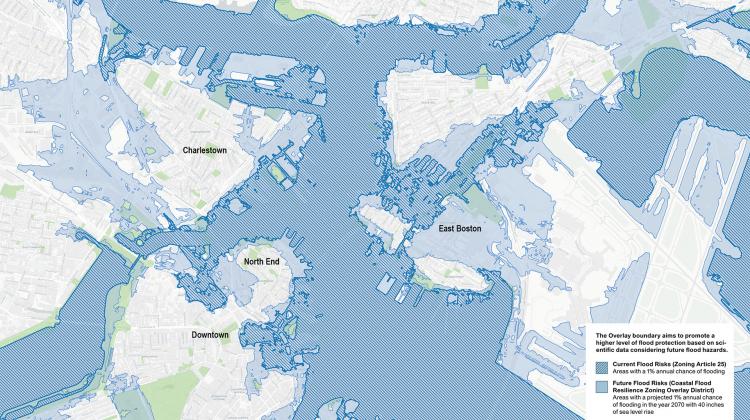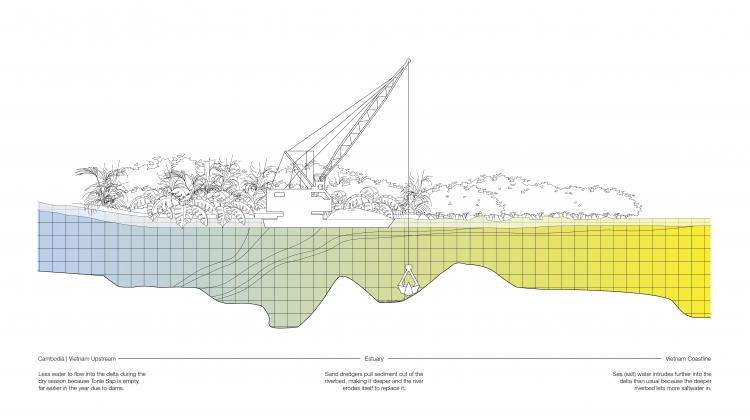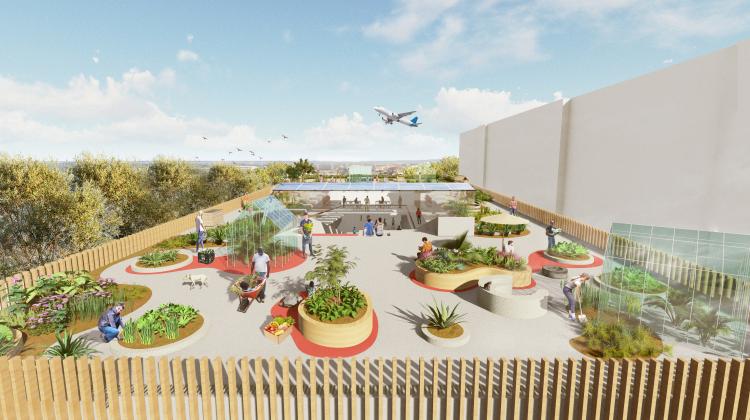Pimpakarn (Prim) Rattanathumawat
Projects
MODELING FLOOD VULNERABILITY

The Sustainability DataPool, powered by the Office of Sustainability (MITOS), gives the MIT community the opportunity to understand data on important sustainability metrics like energy, water use, emissions, and recycling rates. While most visualizations share data from past events, the newest dashboard — the MIT Climate Resiliency Dashboard — looks to potential future events in the form of flooding on campus.
The dashboard is an essential planning tool for ongoing work to build a climate-resilient MIT, one that fulfills its mission in the face of impacts of climate change. It’s also a tool that highlights the importance of collaboration in devising sustainability solutions.
Development of the dashboard began in 2017 when the City of Cambridge, Massachusetts, released the first version of its FloodViewer. At the time, the City of Cambridge did not have a full account of MIT’s stormwater drainage system, so the viewer was launched without it. That unmapped area served as a call to action for MITOS.
Projected flooding data is laid over a campus map of MIT, allowing users to zoom in on a portion of campus under a specific scenario — say, a 100-year storm occurring in 2030 — and see the projected potential peak rain or storm surge water depth at that location.
The dashboard explains not only how these numbers were calculated, but what types of rain and storm surge events can cause them to happen. By enabling MIT to understand flood risk for new buildings, they can respond holistically to that risk and integrate flood mitigation strategies as part of the overarching design.
The dashboard is an essential planning tool for ongoing work to build a climate-resilient MIT, one that fulfills its mission in the face of impacts of climate change. It’s also a tool that highlights the importance of collaboration in devising sustainability solutions.
Development of the dashboard began in 2017 when the City of Cambridge, Massachusetts, released the first version of its FloodViewer. At the time, the City of Cambridge did not have a full account of MIT’s stormwater drainage system, so the viewer was launched without it. That unmapped area served as a call to action for MITOS.
Projected flooding data is laid over a campus map of MIT, allowing users to zoom in on a portion of campus under a specific scenario — say, a 100-year storm occurring in 2030 — and see the projected potential peak rain or storm surge water depth at that location.
The dashboard explains not only how these numbers were calculated, but what types of rain and storm surge events can cause them to happen. By enabling MIT to understand flood risk for new buildings, they can respond holistically to that risk and integrate flood mitigation strategies as part of the overarching design.
DROUGHT OF THE SINKING DELTA

Rising sea levels and subsiding land are threatening to flood the area. Simultaneously, the annual Monsoon inundations are delayed more and more often, while still retreating early, and leaving local fields parched.
Deltas have always been hubs of human development. Ancient civilizations flourished in the Nile and the Ganges deltas. Today, half a billion people call deltas home—even though they cover only 1% of the earth’s land surface. With rich crops and abundant fish, deltas are crucial to food security and economic development. However, deltas are also extremely vulnerable. Located at the intersection of terrestrial and aquatic ecosystems, a delta’s entire existence depends on a delicate balance of factors: Temperature. Freshwater and saltwater. Precipitation and river flow.
In the Mekong delta, this balance has been disturbed. As a consequence, the delta of Southeast Asia’s largest river is both sinking and drying out at the same time. While ever-rising waves lap away at the coastline, and higher sea levels push salty water into the delta, severe droughts are leaving the landscape parched.
Deltas have always been hubs of human development. Ancient civilizations flourished in the Nile and the Ganges deltas. Today, half a billion people call deltas home—even though they cover only 1% of the earth’s land surface. With rich crops and abundant fish, deltas are crucial to food security and economic development. However, deltas are also extremely vulnerable. Located at the intersection of terrestrial and aquatic ecosystems, a delta’s entire existence depends on a delicate balance of factors: Temperature. Freshwater and saltwater. Precipitation and river flow.
In the Mekong delta, this balance has been disturbed. As a consequence, the delta of Southeast Asia’s largest river is both sinking and drying out at the same time. While ever-rising waves lap away at the coastline, and higher sea levels push salty water into the delta, severe droughts are leaving the landscape parched.
EASTIE GREEN LEARNING SHELTER

East Boston was originally an archipelago, slowly connected over the years through several marshland infill projects. That infill has created a number of low-lying areas, making East Boston at risk of coastal flooding from current storm surges, as well as a predicted extra 9 inches of sea-level rise (by the 2030s) and plus a predicted 36 inches in the 2070s.
Currently, all of the existing 3 emergency shelters are located in the flood risks zone, therefore a search for a potential new location for a shelter is needed. Taking into account the location and the area of city-owned land, East Boston High School seems to be an ideal site for the new shelter as it is located on a higher elevation, accessible by public transits and centrally located in the neighborhood of Eagle hill.
Green jobs, training and youth empowerment are also an integral part of East Boston climate, environmental, and community development organizations. East Boston high school with over one thousand students plays an important role in producing the future generation of the workforce. According to the survey, over one-third of East Boston high school graduates plan to join the workforce straight out of school. With the right training program, we can help expand the opportunity for these students to enter the green jobs market smoothly.
The design of the new training center takes into consideration the flexibility to switch between the learning center and an emergency shelter. The spaces were designed according to both program's needs. The learning shelter will host green electives and the new CTE Pathway classes, bringing local experts to teach the students and embracing community engagement. The student will learn about future green career oppotunities, building awareness about climate change and help build a resilient community.
Currently, all of the existing 3 emergency shelters are located in the flood risks zone, therefore a search for a potential new location for a shelter is needed. Taking into account the location and the area of city-owned land, East Boston High School seems to be an ideal site for the new shelter as it is located on a higher elevation, accessible by public transits and centrally located in the neighborhood of Eagle hill.
Green jobs, training and youth empowerment are also an integral part of East Boston climate, environmental, and community development organizations. East Boston high school with over one thousand students plays an important role in producing the future generation of the workforce. According to the survey, over one-third of East Boston high school graduates plan to join the workforce straight out of school. With the right training program, we can help expand the opportunity for these students to enter the green jobs market smoothly.
The design of the new training center takes into consideration the flexibility to switch between the learning center and an emergency shelter. The spaces were designed according to both program's needs. The learning shelter will host green electives and the new CTE Pathway classes, bringing local experts to teach the students and embracing community engagement. The student will learn about future green career oppotunities, building awareness about climate change and help build a resilient community.



